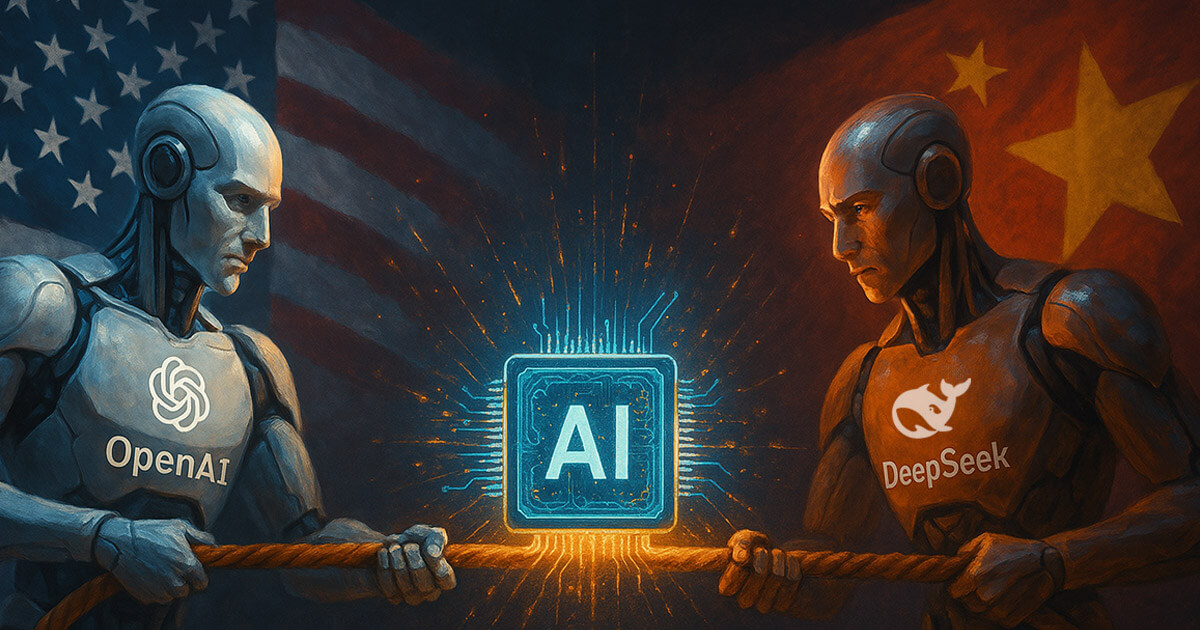Strategies for Maintaining American Competitiveness in AI

This article is a guest contribution by Ahmad Shadid, the Founder of O.xyz.
OpenAI’s AI Action Plan: A Bold Strategy for Dominance
In today’s world, where artificial intelligence plays a vital role in global power, OpenAI is taking steps to maintain the United States’ leading position in this field. The organization has introduced the “AI Action Plan,” aiming to simplify regulations, implement export controls, and boost federal investments to remain competitive against China’s expanding AI capabilities.
On March 13, OpenAI entered a partnership with the Trump administration concerning the AI Action Plan. This agreement focuses on reducing regulatory barriers and accelerating AI development within the United States.
The core message of the proposal is clear: excessive state-level regulations could weaken America’s AI leadership, especially as China continues to support its AI businesses, such as DeepSeek, which are growing at a remarkable pace.
Protecting AI from Censorship
DeepSeek’s R1 model, launched in January 2025, demonstrated performance comparable to leading American AI systems, but at significantly lower costs. This development raised concerns in the U.S. tech market, leading to declines in stock values for major companies like Nvidia. Following these events, the U.S. government emphasized the importance of national security and data privacy, exploring policies to maintain technological leadership.
OpenAI’s strategy highlights a transformative shift in U.S. AI policy, which combines a push for regulatory support with ambitious business goals. Central to this plan is an export control strategy designed to limit countries like China from misusing American AI technologies. Such measures are intended to enhance the safety of U.S. national security.
OpenAI envisions using federal funds to promote the security of American-developed AI. The aim is to communicate that AI produced in the U.S. is safer, thus encouraging companies to lead in the global AI arena.
DeepSeek is not just a commercial threat; it is also closely tied to the Chinese Communist Party (CCP). Recently, it faced backlash for censoring information about the 1989 Tiananmen Square protests, which drew attention to China’s strict information controls.
The Ambitious $500 Billion Plan
A major component of OpenAI’s initiative is increasing federal funding for AI infrastructure. The goal is not only to safeguard against foreign competition but also to ensure the U.S. has the necessary computational resources and data infrastructure for sustained growth in AI technology.
One notable project, the Stargate Project, is a collaborative effort among OpenAI, SoftBank, Oracle, and MGX, aiming to allocate up to $500 billion for building AI infrastructure in the U.S. This initiative seeks to solidify the country’s dominance in AI while creating thousands of jobs, countering the narrative that AI will simply replace human jobs.
Recognizing the need for enhanced federal support, the Stargate Project aims to establish advanced data centers and expand semiconductor manufacturing domestically. Such steps are vital for maintaining competitiveness in AI development, especially given AI’s crucial role in national defense and cybersecurity. For instance, Shield AI’s Nova is an autonomous drone capable of navigating complex environments to gather information during combat situations.
AI is also essential for protecting national security through cyber defense, identifying threats in real-time. Moreover, its capabilities in recognizing patterns can help shield critical infrastructure from cyberattacks, making rapid advancements in AI for defense a top priority.
Advancing AI Training Models
OpenAI’s proposal includes advocating for a new copyright framework that allows American AI models to access copyrighted materials for training. This access is crucial for keeping AI systems advanced and competitive.
Restrictive copyright regulations could hinder U.S. AI models, especially compared to foreign competitors such as China, where copyright enforcement is often weaker. AI tools must navigate a maze of risk assessments, governance standards, and compliance checks, which can delay their deployment. While policies like FedRAMP’s expedited approval can help, other regulatory scrutiny remains essential for national security and consumer protection.
Despite these safeguards being necessary, they can slow the adoption of AI technologies in important government applications. OpenAI advocates for a collaborative effort between government and industry, suggesting that AI firms voluntarily share their data in exchange for reduced regulatory burdens.
Challenges Ahead
OpenAI’s ambitious proposal raises critical questions about the balance between regulation and innovation in the fast-evolving AI sector. While loosening state-level oversight could accelerate progress, concerns persist regarding the potential for private companies to gain excessive influence over national AI policies and their implications for users.
Despite these challenges, one fact remains clear: the United States must keep pace with other countries in AI advancement. If managed effectively, this partnership between industry and government could ensure that American AI remains the primary technology on the global stage, instead of yielding ground to rivals like China’s DeepSeek.






